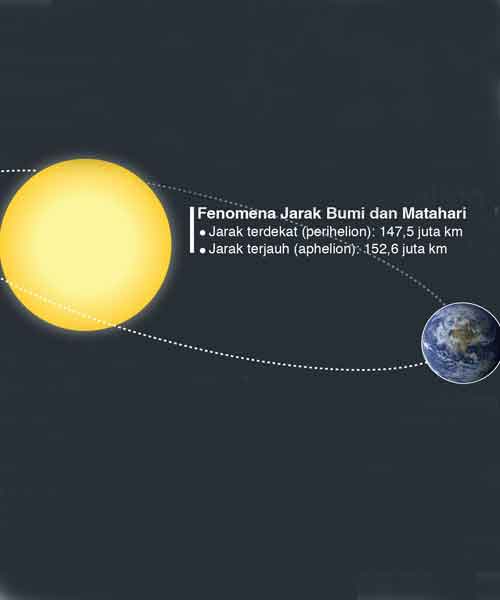Researcher from the National Institute of Aeronautics and Space (Lapan) Andi Pangerang explained that it took 365 days or a full year for the Earth to completely circle the Sun as the center of the solar system. In revolving around the Sun, the Earth moves in an orbit that is not perfectly round, but is elliptical or oval in shape.
The elliptical shape of the orbit makes the Earth orbit the Sun in a sloping curve so that in a year the Earth has the closest distance (perihelion) in January and the furthest distance from the sun (aphelion) in July.
When aphelion occurs, the diameter of the Sun appears slightly smaller. Its size is about 15.73 arc minutes or a decrease of 1.68%.
If aphelion is 152 million km, then what is the perihelion distance? Quoted from NASA Science, this year’s perihelion is 147.5 million km. Aphelion and perihelion in the last decade to the next decade will occur around 13-15 after the solstice.
Andi said, both perihelion and aphelion are normal events. For aphelion, there is no significant impact on Earth. “There is no direct impact for Indonesia,” he said, quoted from the Lapan page.
Cold temperatures in the mornings that have occurred recently and later until August, he continued, are common in the dry season due to little cloud cover so that there is no heat from the Earth’s surface.
However, due to the position of the Sun which is currently in the northern hemisphere, the air pressure in the northern hemisphere will be lower when compared to the south, which is experiencing winter, as is experienced by Australia today.
“The impact is a decrease in temperature, especially on the islands of Java, Bali and Nusa Tenggara, which are located south of the equator,” he said. Head of the Center for Public Meteorology of the Meteorology, Climatology and Geophysics Agency (BMKG) Fachri Radjab agrees that there is no direct impact of aphelion on temperature or weather on Earth.
However, he added, aphelion has an effect on tidal conditions. “Actually tides and waves are different phenomena, different causes.
However, high sea waves that occur during high tide periods will become more dangerous,” he explained. Indonesian Media Doc
(WWD)
– .


